USF Study: Skin Lesions on Fish Decline Years After BP Oil Spill
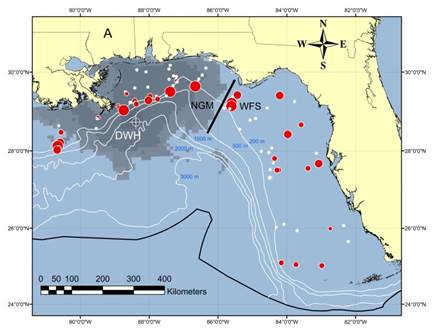 Scientists studying the impact of the 2010 Deepwater Horizon oil spill on the health of fish in the Gulf of Mexico have found strong evidence that an outbreak of skin lesions and oil residue signatures discovered in fishes a year after the spill may be related to the catastrophe. Read more here 15:17
Scientists studying the impact of the 2010 Deepwater Horizon oil spill on the health of fish in the Gulf of Mexico have found strong evidence that an outbreak of skin lesions and oil residue signatures discovered in fishes a year after the spill may be related to the catastrophe. Read more here 15:17


































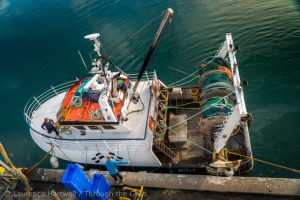


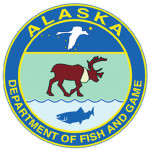



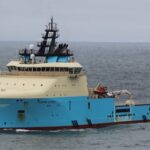


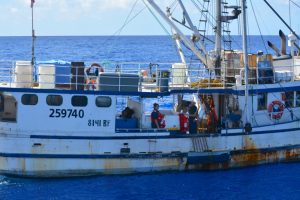



“…an outbreak of skin lesions and oil residue signatures discovered in fish a year after the BP oil spill in the Gulf of Mexico may be related to the catastrophe.”
Really? Anyone paying even a bit of attention to the aftermath of the Exxon (Mobil) Valdez atrocity could have predicted that. The returning Salmon have deformities and malfunctioning hearts due to the oil contamination decades after that Alaskan spill. Especially since the Deepwater Horizon catastrophe was many times greater in volume than Valdez—with the added attraction of 2 million gallons of toxic Corexit—is it a surprise that the fish are hurting? Is it considered noteworthy scientific discovery to figure this out?
Actually the two spills are related: BP apparently was responsible not only for injuring the Gulf of Mexico but also for the blown “spill security” in Valdez, as well, since it was BP’s pipeline that was involved pumping crude to the tanker Exxon Valdez. Beyond Petroleum?
NOAA Fisheries or The National Marine Fisheries Service in conjunction with the Department of Interior’s Minerals Management Service was responsible under various laws to protect the environment and the Marine Fish and Mammals from disasters such as The Deepwater Horizon spill.
And do you suppose the eco-science luminary (and at that time director of National Marine Fisheries Service) Jane Lubchenco’s claim, not long after the oil stopped gushing, that the hungry little warm-water microbes disposed of 75% of the spilled 200 million gallons of oil; do you suppose that her “scientific assessment” might have been less than accurate—or less than sincere?
Jane Lubchenco took over the director role of this National Marine Fisheries Service agency from William Hogarth, coincidentally, who is mentioned in the article above, along with Steve Murawski who was chief scientist at National Marine Fisheries Service and who coincidentally is also quoted in the article above.
It is refreshing to hear former employees of National Marine Fisheries Service, normally pre-occupied (some would argue obsessed) with saving the seas by constricting the greedy destructive commercial fishermen, actually referring to something other than “overfishing” as having an effect on the fish stocks.
Although Steve Murawski finally declared that “overfishing” had ended, it seems he had to wait for his exit from the role of chief scientist at National Marine Fisheries Service to do so. And 2 months before the BP Deepwater Spill, Jane Lubchenco at a conference on the Health of the Oceans declared that the major threat to the ocean was overfishing and destructive fishing gear. She, along with the Minerals Management Service, apparently missed what was going on in the Gulf of Mexico—although it was their job to manage the Fisheries and the Minerals and to know exactly what was going on in the Gulf.
And where were these academic scientists when Jane Lubchenco and the Dept. of Interior’s Minerals Management Service were glossing over the effects of this catastrophe?
I guess it’s cooled off enough “…an outbreak of skin lesions and oil residue signatures discovered in fish a year after the BP oil spill in the Gulf of Mexico may be related to the catastrophe.”
Really? Anyone paying even a bit of attention to the aftermath of the Exxon (Mobil) Valdez atrocity could have predicted that. The returning Salmon have deformities and malfunctioning hearts due to the oil contamination decades after that Alaskan spill. Especially since the Deepwater Horizon catastrophe was many times greater in volume than Valdez—with the added attraction of 2 million gallons of toxic Corexit—is it a surprise that the fish are hurting? Is it considered noteworthy scientific discovery to figure this out?
Actually the two spills are related: BP apparently was responsible not only for injuring the Gulf of Mexico but also for the blown “spill security” in Valdez, as well, since it was BP’s pipeline that was involved pumping crude to the tanker Exxon Valdez. Beyond Petroleum?
NOAA Fisheries or The National Marine Fisheries Service in conjunction with the Department of Interior’s Minerals Management Service was responsible under various laws to protect the environment and the Marine Fish and Mammals from disasters such as The Deepwater Horizon spill.
And do you suppose the eco-science luminary (and at that time director of National Marine Fisheries Service) Jane Lubchenco’s claim, not long after the oil stopped gushing, that the hungry little warm-water microbes disposed of 75% of the spilled 200 million gallons of oil; do you suppose that her “scientific assessment” might have been less than accurate—or less than sincere?
Jane Lubchenco took over the director role of this National Marine Fisheries Service agency from William Hogarth, coincidentally, who is mentioned in the article above, along with Steve Murawski who was chief scientist at National Marine Fisheries Service and who coincidentally is also quoted in the article above.
It is refreshing to hear former employees of National Marine Fisheries Service, normally pre-occupied (some would argue obsessed) with saving the seas by constricting the greedy destructive commercial fishermen, actually referring to something other than “overfishing” as having an effect on the fish stocks.
Although Steve Murawski finally declared that “overfishing” had ended, it seems he had to wait for his exit from the role of chief scientist at National Marine Fisheries Service to do so. And 2 months before the BP Deepwater Spill, Jane Lubchenco at a conference on the Health of the Oceans declared that the major threat to the ocean was overfishing and destructive fishing gear. She, along with the Minerals Management Service, apparently missed what was going on in the Gulf of Mexico—although it was their job to manage the Fisheries and the Minerals and to know exactly what was going on in the Gulf.
And where were these academic scientists when Jane Lubchenco and the Dept. of Interior’s Minerals Management Service were glossing over the effects of this catastrophe? I guess it’s cooled off enough now for a bit of the truth to come out.
It has become apparent to me that you must be a lying corrupt individual with no conscience whatsoever in order to be a part of this administration.
I pray that when these corrupt individuals are gone, they will be replaced by people with morals, and will be able to tell the truth. IF WE LAST THAT LONG.
Tick tock.
There is zero allowance for this “PLANET ALTERING EVENT”. Janie had plenty to review with the 1989 Exxon Valdez spill and the use of “COREXIT”. This was the largest illusion ever performed. Spill Crude add “COREXIT” out of sight out of MIND. By Dr. Jane Lubchenco PhD. allowing BP to use “COREXIT” she has earned the honor of becoming “THE MOST DANGEROUS WOMAN ON THE PLANET”
BP keep cutting those Checks and clean up that shit you sank to the Bottom.